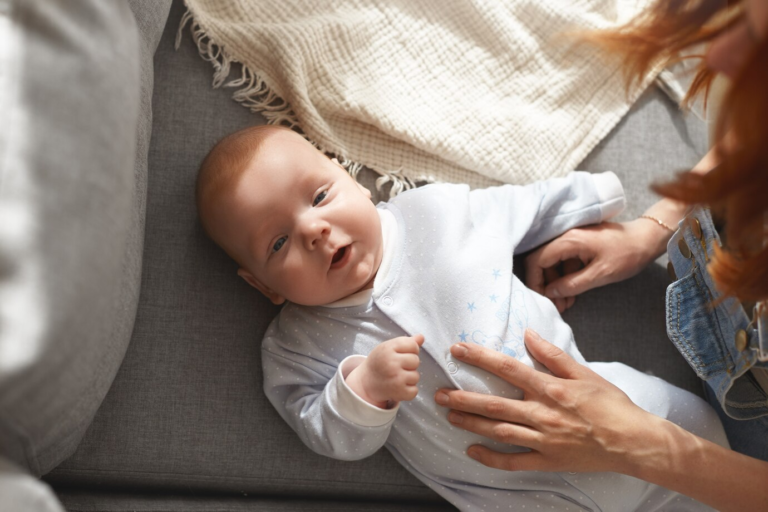Choosing the safest baby products can feel overwhelming, especially with so many options on the market. From cribs to car seats, every decision you make impacts your baby’s safety and well-being. But what if there’s more to it than just reading labels and reviews? In this article, we’ll uncover the hidden truths about selecting the safest baby products and provide practical tips to help you make informed choices.
See Also: What They Never Told You About the Dangers of Screen Time for Toddlers
1. Understanding Safety Standards and Certifications

Not all baby products are created equal. Look for items that meet safety standards set by reputable organizations like the Consumer Product Safety Commission (CPSC) or ASTM International. These certifications ensure the product has been rigorously tested for safety.
- Tip: Check for labels like JPMA Certified (Juvenile Products Manufacturers Association) or Greenguard Gold, which indicate low chemical emissions.
- Hidden Truth: Some products may claim to be “safe” without proper certification. Always verify the credentials.
2. The Importance of Material Safety

Babies are more vulnerable to toxins because their bodies are still developing. Avoid products made with harmful chemicals like phthalates, BPA, lead, or formaldehyde.
- Tip: Opt for natural materials like organic cotton, solid wood, or food-grade silicone.
- Hidden Truth: Even “natural” products can contain hidden chemicals. Research the brand’s transparency and manufacturing process.
3. Avoiding Common Choking Hazards

Small parts, loose buttons, or detachable components can pose serious choking risks. Always inspect baby products for potential hazards.
- Tip: Follow the age recommendations on product labels. Avoid toys or items with small parts for babies under 3 years old.
- Hidden Truth: Some products marketed for babies may still have small parts. Always double-check before purchasing.
4. The Role of Product Recalls
Even trusted brands can have safety issues. Regularly check for product recalls to ensure your baby’s items haven’t been flagged for safety concerns.
- Tip: Sign up for recall alerts from the CPSC or use apps like RecallFinder.
- Hidden Truth: Recalls aren’t always widely publicized. Staying proactive is key to keeping your baby safe.
5. Prioritizing Ergonomics and Design
A product’s design can significantly impact your baby’s safety and comfort. For example, car seats should have proper side-impact protection, and strollers should have a stable base to prevent tipping.
- Tip: Test products in-store when possible. Look for features like 5-point harnesses, adjustable straps, and non-slip surfaces.
- Hidden Truth: Aesthetics often take precedence over safety in marketing. Focus on functionality over looks.
6. The Hidden Dangers of Secondhand Products

While secondhand baby products can save money, they may not meet current safety standards or could be worn out from previous use.
- Tip: Avoid secondhand car seats, cribs, or mattresses unless you’re certain of their history and condition.
- Hidden Truth: Older products may lack modern safety features or could have been part of a recall.
7. Reading Between the Lines of Product Reviews
Online reviews can be helpful, but they’re not always reliable. Some reviews may be biased or fake, and others might not address safety concerns.
- Tip: Look for detailed reviews from verified buyers and pay attention to recurring complaints about safety.
- Hidden Truth: A high rating doesn’t always mean a product is safe. Dig deeper into the reviews.
8. The Importance of Proper Installation and Use
Even the safest baby products can become hazardous if not used correctly. Improper installation of car seats or incorrect assembly of cribs can lead to accidents.
- Tip: Follow the manufacturer’s instructions carefully and seek professional help if needed (e.g., car seat installation checks).
- Hidden Truth: Many parents overlook the importance of proper setup, assuming the product is safe out of the box.
9. Trusting Your Instincts as a Parent

While research and certifications are essential, don’t underestimate your instincts as a parent. If something feels off about a product, trust your gut.
- Tip: If a product seems flimsy, smells strongly of chemicals, or doesn’t feel right, it’s better to avoid it.
- Hidden Truth: Marketing can be persuasive, but your intuition is a powerful tool for keeping your baby safe.
10. Staying Informed and Updated
Safety standards and product recommendations evolve over time. What was considered safe a decade ago may no longer meet today’s standards.
- Tip: Stay updated on the latest safety guidelines and research. Join parenting forums or follow trusted organizations for updates.
- Hidden Truth: The baby product industry is constantly changing. What’s safe today might not be tomorrow.
Conclusion
Choosing the safest baby products requires more than just picking the most popular or expensive option. By understanding safety standards, prioritizing material safety, and staying informed, you can make better decisions for your little one. Remember, your baby’s safety is worth the extra effort.
If you found this article helpful, share it with other parents to help them navigate the world of baby products with confidence!





